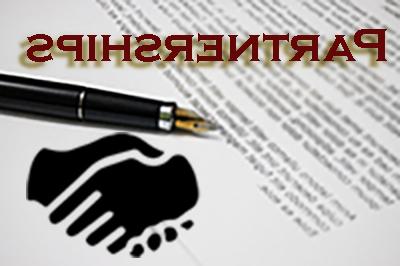IRS Update: Does your partnership agreement need to be revised?
Last month, the Internal Revenue Service (IRS) finalized proposed regulations on the  designation and authority of a partnership representative under the centralized partnership audit procedures that went into effect for tax years after December 31, 2017. This article addresses some of the key points of the final regulations.
designation and authority of a partnership representative under the centralized partnership audit procedures that went into effect for tax years after December 31, 2017. This article addresses some of the key points of the final regulations.
Prior to discussing these regulations, we thought it might be beneficial to briefly discuss the centralized partnership audit procedures. Historically, if the IRS audited a partnership tax return and required adjustments to be made, those adjustments would be made on the returns of the partners of the partnership rather than the partnership itself (since the partnership is not a tax paying entity). Under the new regime, if the IRS examines a partnership return and requires adjustments, these adjustments will be made at the partnership level in the year that the audit is completed (not the year under review). Thus, any cost of the adjustment is shifted to the partners who hold an interest in the partnership at the time of the audit rather than at the time the original return was filed. It is the partnership that will pay any additional tax, interest and penalties on any underpayments at the highest statutory rate for each partnership’s distributive share of the underpayment. The partnership might consider whether to make a “push-out” election, whereby any audit adjustments are allocated to the partners in the year subject to the audit (as opposed to the year of review). If the “push-out” election is made, an additional interest charge of 200 basis points will apply to any underpayment amount.
The new regime provides an election to opt out of these procedures if the partnership has 100 or fewer partners and all of the partners are either individuals, C corporations, foreign entities that would be characterized as C corporations if incorporated in the US, S corporations or certain estates. If the partnership has any partners that are treated as partnerships for US tax purposes (i.e., most other funds), it cannot elect out of these new audit rules.
Under the centralized partnership audit procedures, the partnership must designate a “partnership representative” who will have the sole authority to bind the partnership in tax audits. The partnership representative is not required to inform partners about the audit proceedings and does not need to obtain permission from the partners to extend any statute of limitations, settle a tax dispute, or pursue litigation in Tax Court. That said, the partnership can enter into a contractual agreement with its partnership representative that places restrictions or obligations on the partnership representative’s powers. Under the final regulations, it is the partnership’s responsibility to determine whether the person it designates as its partnership representative has the “capacity to act” as a representative of the partnership.
The partnership representative may be an individual or an entity, including the partnership or an entity that is disregarded for US tax purposes. If the partnership representative is an entity, the partnership will still have to designate an individual to act on behalf of the partnership, but such person need not be an employee, officer or director of the entity designated as the partnership representative.
In order to serve as a partnership representative or designated individual, the designee must have a substantial presence in the US. This means that the person can meet with the IRS in person, has a street address in the US, has a telephone number in the US, and possesses a US tax identification number. Although the partnership representative or designated individual must have a substantial presence in the US, the final regulations do permit the partnership representative to engage another person (i.e., a CPA or attorney) to act on its behalf during an examination under the existing power of attorney procedures.
Importantly, the partnership should be aware that there are limited opportunities to change the partnership representative once the tax return has been filed. Once an initial designation has been made, the partnership cannot revoke or change its partnership representative until it files an administrative adjustment request or receives notification from the IRS that it intends to initiate an audit. The partnership representative cannot resign until such person receives a notice of administrative proceeding from the IRS. Furthermore, the resigning representative cannot choose a successor.
If the partnership does not designate a partnership representative or if it has changed the partnership representative multiple times in a short period of time, the IRS has the power to designate the partnership representative. With respect to multiple designations, prior to doing that, the IRS must, within 90 days of receipt of the current revocation that the IRS is considering, notify the partnership that it does not have a valid partnership representative designation. The final regulations contain a list of factors that the IRS will consider when it designates a partnership representative.
For partnerships that have a calendar year-end, the changes to the centralized audit procedures will become effective for US tax filings from 2018 onward. Given that it will be difficult to change the partnership representative under the final regulations, it is important for partnerships that file US tax returns to pay considerable attention to the initial designation of its partnership representative.
Furthermore, to comply with the centralized audit procedures and the final regulations on the designation of a partnership representative, the partnership should review its partnership agreement to address the rights of partners with respect to audit notification, audit participation, and any input on settlements with the IRS. The partnership may want to consider whether to add a definition regarding what “capacity to act” means with respect to the partnership representative or enter into a side agreement with the partnership representative. It will also want to determine whether it should require the partnership representative to elect out of the centralized partnership audit regime (assuming the partnership is eligible to do this) and if that is not possible, whether it should require the partnership representative to make the “push-out” election. If the partnership representative is not required to make the “push-out” election, the partnership should address any potential economic distortions that could result from the fact that any audit adjustments will be made in the year of the audit instead of the year that the tax return was originally submitted.
Contact Brad Albin with any questions.




